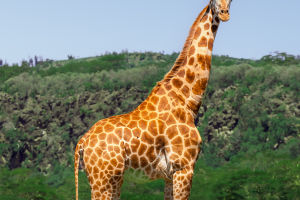We are afraid the most common animal you see when visiting a zoo is the zebra. Almost every zoo has them, and they have distinctive fur that makes them easy to identify.
But what you may not know is that the black and white stripes on zebras are the same as human fingerprints, and no two are the same.
There are three types of zebras in the world, namely the plains zebra, the mountain zebra, and the fine-striped zebra. The vast majority of our common species are plains zebras, mainly found in eastern, central, and southern Africa, while the fine-striped zebra is found in East Africa and the mountain zebra is found in South Africa.
The difference between the three species of zebras is so small that it is hard to see the difference at first glance. Still, if you focus your attention on their bellies and butts, you will find that the stripes of the plains zebra extend to the belly, while the other two species of zebras have no stripes on their bellies.
The stripes on the butt of the fine-striped zebra are particularly fine and dense, while the stripes on the butt of the mountain zebra are more rugged, with only a few very thick stripes.
Zebras are very similar to horses in all aspects except for the fact that they are different from horses in terms of fur. Humans domesticated the horse about 5,500 years ago, allowing it to be ridden and used for transportation.
However, to this day, the zebra can only be tamed (made to obey with a leather whip), not domesticated.
The zebra is an animal of the equine family Equidae, evolved from the proto-horse about 4 to 4.5 million years ago and is a unique species in Africa, with two to eight subspecies under each of the three extant zebras.
All three zebra species are typically herd animals, with a herd usually consisting of one adult male and multiple adult females. The large herds of dozens or even hundreds of zebras in the Animals section comprise different groups that come together briefly while migrating or foraging.
All zebras have black and white stripes, which are very obvious to us humans and easily spotted. But these stripes serve a purpose in nature; otherwise, they would have been eliminated by natural selection. So what exactly is the purpose of the stripes on the zebra?
Although the zebra's stripes appear obvious to our eyes, they are protective coloration for natural predators that prey on them.
Our human vision is colorful because our eyes have red, blue, and green three kinds of visual cone cells, which are primary colors that, when mixed, can produce a variety of colors. As a result, the world appears colorful to us.
However, animals usually have only one or two kinds of visual cone cells, and most of them are colorblind.
For example, although felines have excellent night vision, they can only distinguish gray, green, and blue colors, and the saturation of these colors in their eyes is very low. Therefore, the world appears different to them than it does to us.
The stripes on the zebra seem very conspicuous to us, but in the eyes of lions, cheetahs, and other natural predators, they are blurred. Not only that, but the black and white stripes on zebras also help to break up their outer contours, making it difficult for predators to target them.
The stripes on zebras are not conducive to concealment in the eyes of humans. But in the eyes of predators, the black and white stripes make them confused or even unreadable.
The stripes on the zebra's body serve as protective colors, which not only confuses predators but also reduces mosquito bites and even regulates body temperature.


